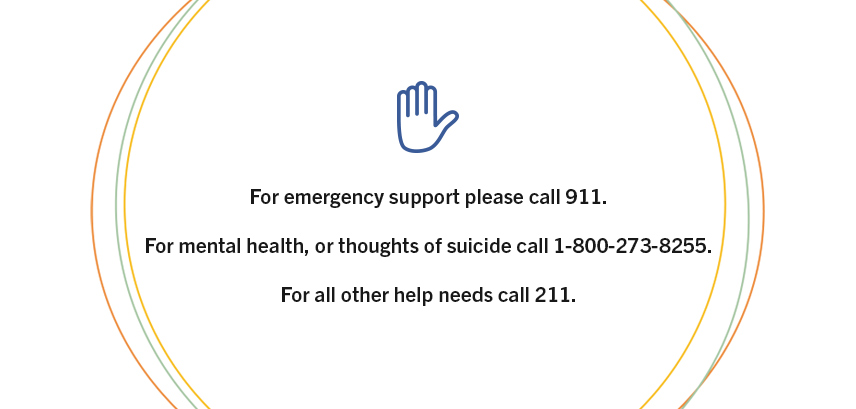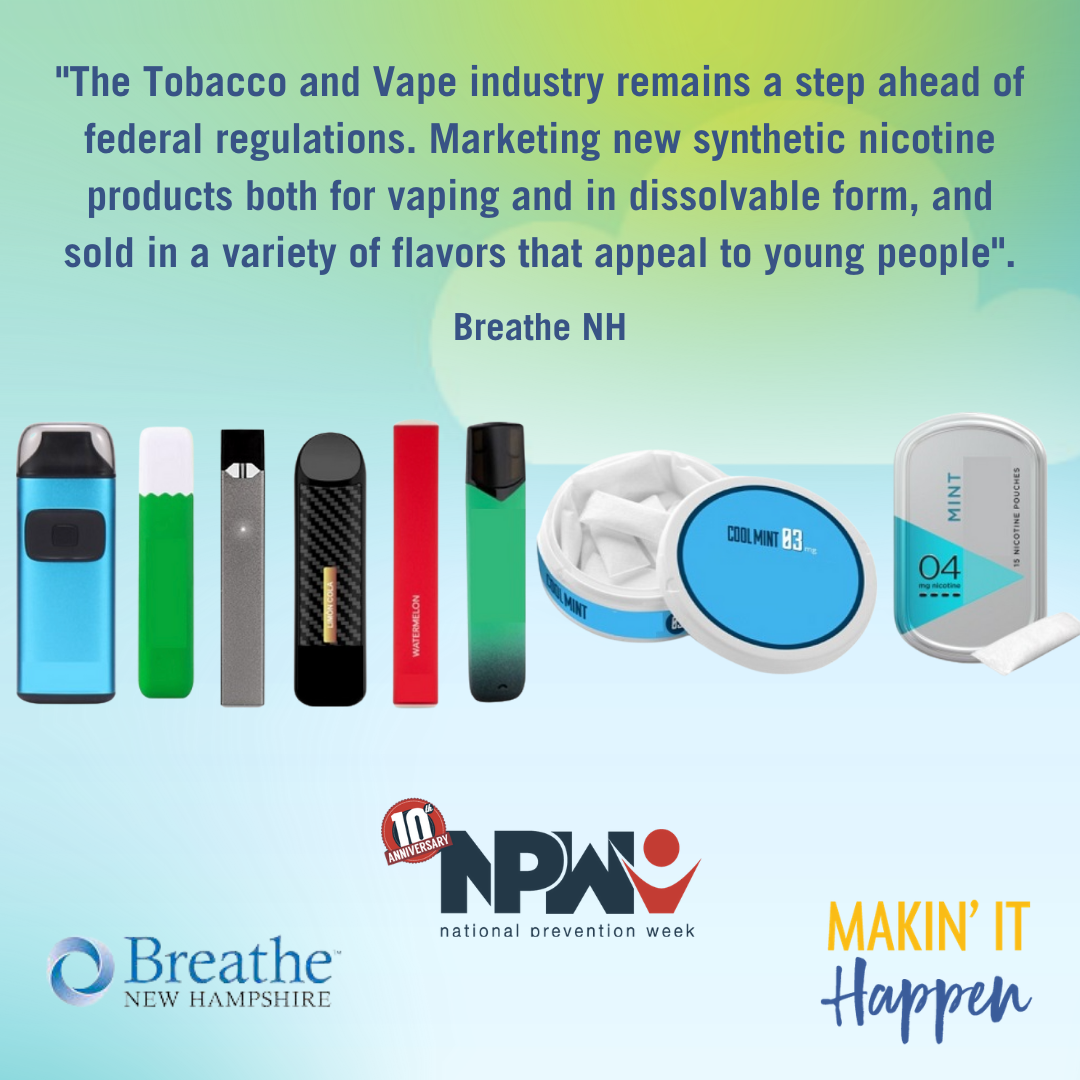
Thank you to our partners at Breathe New Hampshire for guest blogging during this 10th Annual National Prevention Week. They provide an important update on the state of tobacco and vaping prevention and treatment.
Teen Vaping: How New Products and A Pandemic Impact Prevention
Vaping and the impact to the health of teens and youth remains an ongoing concern. This past year presented numerous challenges, and young people were forced to adapt to so many changes out of their control, causing even more stress and anxiety. The emergence of COVID-19 also meant unforeseen challenges in the fight against youth vaping. Regulations and opportunities to connect with teens and youth at school were limited compared to before the pandemic.
Impact of COVID-19 and Teen Vaping
As with cigarette smoking, vaping can also compromise the respiratory system. Teens and youth who vape face a much higher risk of COVID-19 than their peers who do not vape. According to a study by Gaiha et al in 2020, the association between youth smoking, vaping and COVID-19, resulted in identifying patterns of youth e-cigarette use. Some key findings from the study participants included one-third of youth quit vaping, another one-third reduced their vaping, with the remaining youth either increasing their use or switching to other nicotine or cannabis products. The study also examined factors associated with sustained use of vape products through the pandemic. Overall, the findings included higher nicotine dependence, e-cigarette use frequency, poor online age verification, among several other factors. These findings may in part reflect the lack of comprehensive addiction services for youth who vape or a lack of awareness of existing services. (JAMANetwork December 2020).
Disposable Vape Products
As the vaping environment evolves, so has the product preference by young people that use them. In recent years, there has been a shift from the once ubiquitous JUUL and similar pod style devices to options available in the disposable vape category, like PuffBar. These affordable, disposable vapes continue to emerge in the market and skirt federal regulations that limited pod type devices. These disposable devices are not covered by the FDA flavor ban that took effect in the beginning of 2020. These newer disposables are filled with an array of nicotine salt solutions in fruity, sweet kid-friendly flavors. Some vapes offer 200-300 hits of nicotine before the device is thrown away. Many times they are sold with a solution higher in nicotine content than a pack or more of cigarettes. One product website suggests: “After the ban on flavored vape pods happened, disposable vapes or disposable e-cigs became the next best option in 2020 for those after ultimate convenience”. Disposable e-cigarette use by high school students reached 26.5% in 2020 compared to 2.4% in 2019. A similar trend was also seen with middle school student use. (2020 Center for Tobacco Products, National Youth Tobacco Survey).
Synthetic Nicotine
Over five years ago JUUL was considered a vape industry innovator through their design of a nicotine salt formula, delivering high levels of nicotine in pre-filled flavored pods. Nicotine salt formulas also created a smoother delivery of aerosol for the person using the product. By and large, vape companies have harvested tobacco for their products from tobacco leaves. However, recent changes to vape and dissolvable products now include the use of synthetic nicotine, created in a lab and not derived from tobacco. These products have not been through the regulatory review and approval process. Flavors continue to play a large part in the marketing of these products to buyers of all ages. Labeling of the products is varied; “tobacco-free”, “tobacco leaf free”, or “extracted from tobacco” which can be misleading and confusing to consumers.
In some cases this form of nicotine is promoted as more pure and less harmful than the tobacco plant nicotine in other products. The origin and chemical mixtures in these products can be unique, and the impact to an individual’s overall health are not yet known.
Due to COVID-19, the FDA delayed their review of vape products this past year, resulting in the development of new products onto the market that bypass existing regulations. The bottom line – we still don’t know what is in some of these products that are increasingly popular among teens and youth, and how it will affect their health in the future. What we do know is that young people have higher nicotine dependence, and those that vaped prior to the pandemic continue to do so more frequently.
An Opportune Time for Prevention and Treatment
Perhaps a silver lining to COVID-19 is that young people are more responsive to the concerns regarding the health effects of vaping. As we hopefully continue to turn the corner on the pandemic, it’s an opportune time for prevention education and awareness about vaping and also for young people to quit. Breathe New Hampshire’s youth vaping education program, Vaping Unveiled™, continues to be available virtually and at no cost. In addition, the state’s Tobacco Prevention and Cessation Program offers two programs that address prevention and treatment for youth and teens: Save Your Breath is a social marketing campaign that raises awareness about the harms of vaping and combats Big Tobacco’s marketing that directly targets youth and for teens that want to quit tobacco and vaping, MyLifeMyQuit™, is a free treatment program to help them quit while meeting young people where they are – on their phones.
About Breathe New Hampshire
As the only statewide public health non-profit focused on critical issues related to lung health, Breathe New Hampshire provides educational programs, advocates for public health, and supports scientific research to prevent, eliminate, and treat lung disease. Our mission is to eliminate lung disease and improve the quality of life for those living with lung disease in New Hampshire. For more information visit www.BreatheNH.org.



